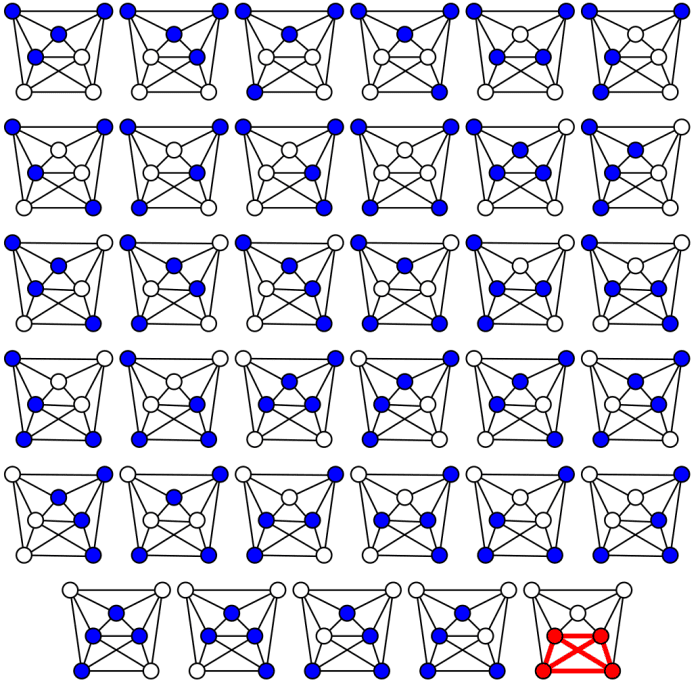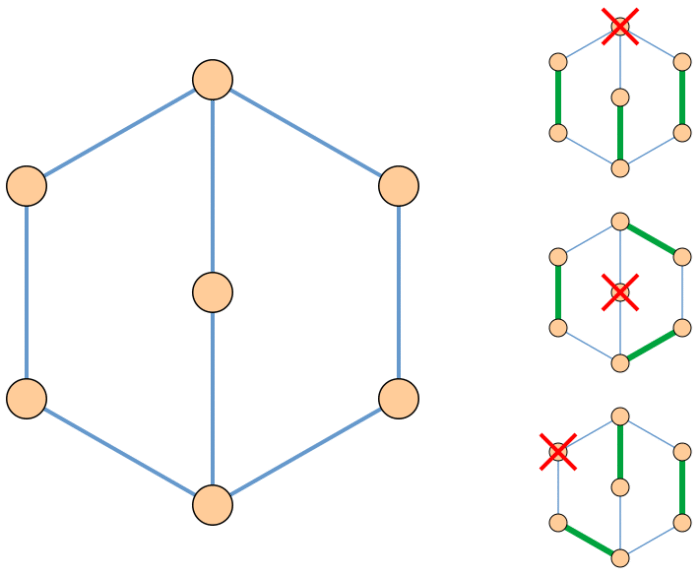P-NP Problem: Prove failed!
The attack on the biggest problem of computer science has failed
Three weeks ago, professor Norbert Blum from Bonn (Germany) believed to have solved the famous P-NP problem. Now he withdraws his proof.

© tiero / Getty Images / iStockFor weeks, computer scientists and mathematicians were in turmoil. Norbert Blum, a renowned scientist from the University of Bonn, had presented a proof on the Internet on August 11, with which he wanted to solve the probably most famous puzzle of computer science: the so-called P-NP problem.
The solution would have had far-reaching consequences for computer science and would have made Blum a millionaire. After all, P-NP is one of the seven highly remunerated "Millennium problems". But now Blum has withdrawn his commentary.
The proof is wrong,
writes the Bonn professor on the Internet platform Arxiv, on which his essay stood before.
The complexity of Sudoku
The P-NP problem is about the question of whether difficult problems can be solved by efficient algorithms. Problems become more complex with increasing size. A Sudoku puzzle, consisting of nine boxes, can be solved very quickly, in contrast to one consisting of 144 boxes. For problems that belong to class P ("polynomial"), the solution time increases polynomially - and thus efficiently - with the length of the problem.
Problems associated with NP ("non-deterministic polynomial") are more complex. They are distinguished by the fact that their solution is efficiently verifiable. But so far, computer scientists have not found any efficient algorithms to find a solution to NP problems. Think of the big Sudoku puzzle: It is difficult to solve, since there are a lot of possible ways to solve the problem that a computer has to check all in sequence. As soon as you have a solution, it is easy for a computer to check its correctness.
For at least 45 years, computer scientists have been wondering whether NP problems are really P-problems. In this case, NP problems could also be solved efficiently, you only have to find the respective algorithms. This would have far-reaching consequences, as, for example, modern encryption methods are based on a NP problem.
The evidence is linked to the 1980s
Blum presented in his work a proof of the prevailing opinion that P and NP are not the same - the encryption procedures and other NP problems remained brain-teasers. For his reasoning, he tackled a problem that was in NP and tried to show that there is no algorithm that solves it efficiently. Thus, P and NP would unambiguously disagree. To prove that a problem can not be solved efficiently, he generalized and extended the results of the theoretical computer scientist Alexander Razborov from the 1980s.

Clique Problem
The clique problem describes the task of finding the maximum number of nodes within a graph that are directly adjacent. The figure shows an algorithm for solving the clique problem. In this case, the clique number is four. © Thore Husfeldt at English Wikipedia / Brute force Clique algorithm / CC BY-SA 3.0 CC BY-SA
This had proved that the so-called clique problem from NP can not be solved in polynomial time if only limited logical operations are allowed for its solution. Bills of all types can be represented by circuits - that's how computers count. In general, there are three logical operations within these circuits: AND, OR, and NOT. In electrical circuits, they decide whether and how electricity flows through them.
P-NP seemed to be close at hand
At that time, many experts believed that Razborov's work was very close to the general proof that P is not NP, and finally, only the non-operation in the circuits was missing. But then the computer scientist Alexander Andreev realized that the so-called matching problem, which does not permit an efficient solution for monotonous circuits, is solved by polynomial time circuits - and thus lies in P. This led a proof that P is not NP, far away.
Blum believed in his work to have found a way to deal with Andreev. He argued that for a particular type of problem that mathematicians can construct by an approximation method, statements about monotonic circuits apply to general circuits. Mathematicians have in the past derived the clique problem about this approximation method, but not the matching problem. In this respect Blum's theorem benefits. Thus, he argued that since no monotonous efficient algorithm solves the clique problem, there is no general efficient algorithm. Thus P would be non-NP without contradicting Andreev's work.

Matching Problem
In the Matching Problem, the largest possible number of pages must be found within a graph that does not end at the same node. On the right in the figure, they correspond to the pages marked in green. In either case, one node can not be paired with another. © David Eppstein, 2008 / public domain
Did Blum look at the work of a Hungarian colleague?
Evidently, however, Blum did not know the work of the Hungarian mathematician Eva Tardos. It once introduced an abstract function to show that monotonic and general circuits are very different. Tardos defined the function named after her by means of the approximation method and showed that the solving time for monotonic circuits exponentially increases with the input length.
Following Blum's proof, the Tardos function should be in NP. In 1988, however, Tardos showed that its function is in P and thus an efficient algorithm exists for the solution. This would disprove Blum's evidence. In the informatics forum stackexchange, a user named "idolvon" is arguing to have found the error in Norbert Blum's proof. Blum himself soon wants to comment on his website. And who knows: Perhaps he succeeds in saving his proof.

Solving P vs NP is a major goal of the entire apparatus of modern complexity theory. You might say that all complexity theorists are implicitly working towards this goal.
Having said that, right now it looks like we're absolutely nowhere near a proof. The reason I say that with confidence is that we actually have a pretty good idea of precisely why our current proof methods cannot ever help us to prove anything about P vs NP. For example, one classic technique used in complexity theory is called diagonalization. It involves organizing a set of items in a particular order and then showing that no matter how the ordering is done, there will always be some items missing from the list. It was used by Cantor to prove that the reals are uncountable, by Turing to show that the halting problem is uncomputable, and by Godel to show that the integers are undescribable. Many complexity theorists thought that it might also be used to show P!=NP, but we now know this will never work. Here's why: any diagonalization argument for P!=NP could trivially be modified to show that P!=NP relative to any oracle. But we already know of specific oracles for which P=NP and of other specific oracles for which P!=NP, so any diagonalization argument would have to contradict one or the other of these. This is known as the relativization barrier. In essence, diagonalization does not probe deeply enough into the structure of P and NP.
Thank you for your detailed information! You are absolutely right, it doesn't look at all like we are near to solve this problem, and the list of wrong proves is indeed very long.
I was pointing that out too in my first article about the P-NP problem.
Hii Friend Nice post , P- Polynomial time solving . Problems which can be solved in polynomial time, which take time like O(n), O(n2), O(n3). Eg: finding maximum element in an array or to check whether a string is palindrome or not. so there are many problems which can be solved in polynomial time.
NP- Non deterministic Polynomial time solving. Problem which can't be solved in polynomial time like TSP( travelling salesman problem) or An easy example of this is subset sum: given a set of numbers, does there exist a subset whose sum is zero?.
So this problem is going to be solved only after somebody comes up with new tools then?
This is really fascinating!
Yes indeed....
Unfortunately, the serious maths that is involved flies right over my head :P I envy people that grasp it and I really respect them for digging deep enough into it to be able to do so.
Resteemed your article. This article was resteemed because you are part of the New Steemians project. You can learn more about it here: https://steemit.com/introduceyourself/@gaman/new-steemians-project-launch
@n3bul4 got you a $1.22 @minnowbooster upgoat, nice! (Image: pixabay.com)
Want a boost? Click here to read more!
Congratulations! This post has been upvoted from the communal account, @minnowsupport, by n3bul4 from the Minnow Support Project. It's a witness project run by aggroed, ausbitbank, teamsteem, theprophet0, someguy123, neoxian, followbtcnews/crimsonclad, and netuoso. The goal is to help Steemit grow by supporting Minnows and creating a social network. Please find us in the Peace, Abundance, and Liberty Network (PALnet) Discord Channel. It's a completely public and open space to all members of the Steemit community who voluntarily choose to be there.
This post has received a 1.42 % upvote from @booster thanks to: @n3bul4.